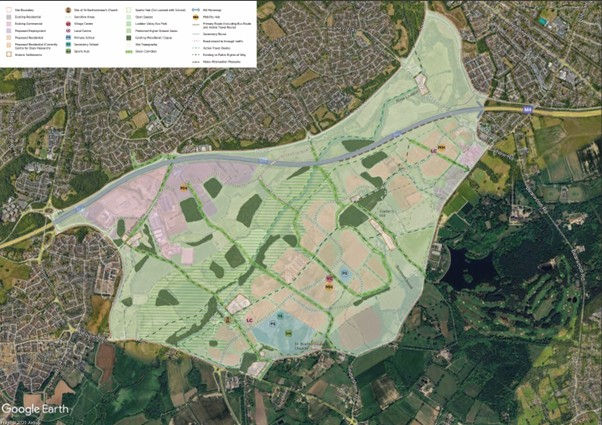Call that a plan? THIS is a plan!
- paulstevens24

- Jan 21, 2022
- 3 min read
According to the Prime Minister, “Transport is one of the supreme leveller uppers”, with many identifying a lack of public transport infrastructure as the main cause of regional inequality in the UK. A recent analysis by Centre for Cities shows that not only do urban public transport networks in Britain vary between cities, they also differ when compared to their Western European counterparts. This has been picked up on by the Financial Times and you can read their article here: https://on.ft.com/3fJbdSY which compares Marseilles to Leeds.
“Researchers found that Britain’s sprawling suburbs of low-density housing, often poorly connected to city centres by weak transport links, were a key reason why British cities are less productive and pleasant places to live than their European mainland equivalent”.
Listed below are some key findings from the full report:
1. Urban public transport commutes to European city centres are easier and faster than in the UK. Approximately, 67 per cent of people in big European cities can reach their city centre by public transport within 30 minutes, compared to only 40 per cent of the people in Britain’s big cities.
2. The low-rise built form of Britain’s big cities prevents people from living near urban public transport. Britain’s reliance on terraced and semi-detached housing means there are fewer people living close to city centres which reduces commuting by public transport and the efficiency of networks.
3. Poor urban transport limits people’s job opportunities and effectively makes our largest cities much smaller than European competitors. This negatively impacts the productivity and economic performance of big cities, costing the UK economy more than £23.1 billion per year.
4. To deliver European-style transport outcomes, expanding urban public transport systems must be paired with efforts to change the built form of big cities, making it easier to live near and use public transport.
The solution they suggest is to encourage councils to implement Local Development Orders to allow for the redevelopment of land near existing public transport as a tool to get more homes built.
The full report can be found here: https://www.centreforcities.org/publication/comparing-public-transport-uk-europe-cities/ and it makes for very interesting reading, particularly in light of some of the current transport issues within Wokingham Borough Council. This is their latest roadworks update:
Roadworks for the week ahead: Barkham (Multi-way lights – Barkham Road) , Finchampstead (2-way lights – Nine Mile Ride), Knowl Hill (2-way lights - Bath Road), Ruscombe (Road Closure – New Road), Sonning (Lane Closure – Charvil Lane and 2-way lights – Pound Lane), Spencers Wood, (Multi-way lights – Hyde End Road), Swallowfield (Multi-way lights – Basingstoke Road), Three Mile Cross (2-way lights – Church Lane), Twyford (2-way lights – New Bath Road), Wokingham (Multi-way lights – Woosehill Spine Road and 2-way lights – Heathlands Road), Woodley (2-way lights – Hurricane Way and Multi-way lights – Bader Way).
Meanwhile the Borough is grinding to a halt, engines are running, pedestrians, residents and cyclists are choking and the Climate Crisis is worsening ☹ Now take this a look at this extract from a recent email to affordableandsustainable@gmail.com
“I have been reading about the plans for additional housing the local council has just submitted for comment. I am absolutely horrified (and depressed to be honest) at the proposals that will turn Wokingham from a leafy green environment to a sprawling urban landscape. And horrified at Reading University for selling the farmland for a quick buck.
To suggest, in the proposal, we have no choice but to accept the proposal as the ‘government’ will just build where they want to if we don’t agree, is absolutely pathetic and weak. You cannot but notice how much green space is being built on and I have also noticed the building contractors are not being held to task on what they are providing. The new Hatch Farm housing that has been built in the past three years is so disappointing as it has had a negative impact on the surrounding areas. We have noticed traffic backed up along Bearwood Road, Mole Road and King Street early mornings and late afternoon and is now very busy throughout the day. The ‘relief road’ is a joke as I’m unclear as to what it is actually relieving!”
Hall Farm, far from being “easily accessible” as claimed by WBC is completely isolated from any transport infrastructure. If Wokingham Borough Council are serious about easing the “Climate Emergency” and solving the “Housing Crisis”, not to mention making getting around easier for residents then get together with all the other authorities within the Greater Reading area and come up with a co-ordinated transport plan!
A starting point could be a return to the Trolley buses or Tram systems that made getting around Reading so much cleaner, greener and cheaper “in the good old days” before private cars were encouraged to take over. Like they do in most modern Cities! 😉






Comments